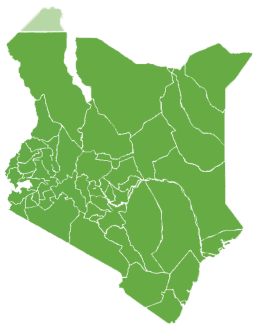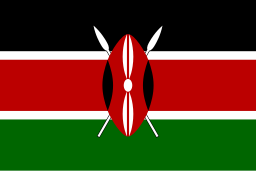Kenya Military Power Ranking 2025
MPR Rank: 69th
MPR SCORE: 495
MPR Index: 0.1928 (1.0000 is perfect)
Reverse MPR Index: 0.7650 (0.0000 is perfect)
Z Score: +0.119 (standard deviations above the mean)
Overview
Kenya ranks 69th in the 2025 Military Power Rankings (MPR). The Kenya Defence Forces (KDF) play a pivotal role in maintaining internal security, safeguarding national borders, and participating in regional peacekeeping operations, particularly in Somalia as part of the African Union Transition Mission in Somalia (ATMIS). While Kenya’s military is relatively small compared to other nations, it is well-respected in East Africa and is actively modernizing its equipment and infrastructure.
Strengths: Regional Leadership and Counterterrorism Capability
Peacekeeping and Regional Stability: Kenya is a leading contributor to African peacekeeping missions, particularly in Somalia under ATMIS. Its forces have gained extensive experience in asymmetric warfare and counterinsurgency.
Modernization Initiatives: The Kenyan government has announced a $236 million military modernization initiative, allocating approximately $45 million annually over five years to acquire tactical vehicles, drones, and other modern defense tools. This investment aims to enhance the protection of security professionals and improve operational efficiency. ADF Magazine
International Partnerships: Kenya maintains strong defense relationships with Western nations, notably the United States, which provides military aid and training. Recent agreements include the delivery of 16 U.S.-manufactured helicopters and approximately 150 M1117 Armored Security Vehicles to bolster the country's security operations and peacekeeping missions. The Star
Air Force Enhancements: The Kenya Air Force is undergoing significant upgrades, including the commissioning of newly refurbished Z-9 helicopters to enhance its aviation capabilities. Ministry of Defense Kenya
Why Kenya Is Ranked 69th
1. Limited Force Size and Conventional Capabilities
Kenya's military maintains a modest size, focusing primarily on internal and regional security.
Active personnel estimated at around 24,000.
Limited heavy armor and artillery units.
Naval capabilities are primarily coastal, with limited blue-water operational capacity.
2. Dependence on Foreign Support for Modernization
While modernization efforts are underway, Kenya relies heavily on foreign aid and partnerships for advanced equipment and training.
Significant portions of new equipment are acquired through foreign military sales and donations.
Domestic defense industry remains underdeveloped, limiting self-sufficiency.
3. Strategic Limitations
Kenya's strategic focus is largely regional, with limited capabilities for extended power projection.
Air and naval forces are tailored for regional operations, lacking long-range strike capabilities.
Intelligence, surveillance, and reconnaissance assets are improving but still developing.
Conclusion
Kenya's military is a respected force within East Africa, contributing significantly to regional peacekeeping and counterterrorism efforts. Ongoing modernization initiatives and strong international partnerships are enhancing its capabilities. However, in the context of the MPR—which emphasizes autonomous warfighting capacity, force size, and power projection—Kenya ranks 69th due to its limited conventional capabilities, dependence on foreign support, and regional strategic focus.
Military Strength and Force Projection
Active Military Personnel: 29,000 (IISS 2023)
Reserve Personnel: 12,000 (CIA World Factbook)
Paramilitary Forces: 20,000 (Kenya Police Reserves)
Army Personnel: 24,000
Navy Personnel: 3,000
Air Force Personnel: 2,000
Ground Forces
Main Battle Tanks (MBTs): 76 (T-72, Vickers Mk.3)
Armored Fighting Vehicles (AFVs): 500+
Artillery (Towed and Self-Propelled): 100+
Air Force
Combat Aircraft: 15+ (SIPRI 2023)
Helicopters: 30+
Transport Aircraft: 10+
Aircraft Breakdown:
F-5 Fighter Jets: 17
Mi-17 Helicopters: 15 (transport)
C-27J Spartan: 3 (transport)
Naval Forces
Frigates: None
Fast Attack Craft: 6
Patrol Vessels: 10+
Missile Capabilities
Kenya does not possess ballistic or hypersonic missiles. Its defense strategy is primarily focused on conventional border and air defense, with some coastal defense capability to safeguard its maritime interests in the Indian Ocean.
Strategic Partnerships
Kenya has strategic defense partnerships with the United States, the United Kingdom, and several European countries, focusing on military training, equipment procurement, and regional security cooperation. Kenya also plays a leading role in regional peacekeeping missions, particularly through its involvement in AMISOM, aimed at stabilizing Somalia.
Military History & Combat Experience
Kenya's military history is characterized by its role in regional stability and counterinsurgency operations.
Post-Independence Security: Since gaining independence in 1963, Kenya has focused on maintaining internal stability and securing its borders, often engaging in operations against insurgent groups and bandits.
Shifta War (1963–1967): Kenya's first major post-independence conflict involved suppressing a secessionist movement in the northeastern region, leading to the establishment of more robust internal security mechanisms.
Peacekeeping Missions: Kenya has been an active participant in various UN and AU peacekeeping missions across Africa, including deployments in Sierra Leone, Sudan, and Somalia.
Operation Linda Nchi (2011): In response to cross-border attacks by Al-Shabaab militants, Kenya launched a military intervention in Somalia, marking a significant shift towards proactive regional security engagement.
Ongoing Counterterrorism Efforts: Kenya continues to combat terrorist threats, both domestically and in collaboration with regional and international partners, focusing on intelligence-led operations and community engagement to prevent radicalization.
Kenya's military experience reflects a commitment to regional stability and a proactive approach to emerging security challenges, balancing internal security needs with contributions to broader peacekeeping efforts.
General Information
Demographics and Geography
Population: ~57.8 million (2024 est.)
Population Available for Military Service: ~23 million
Geographic Area: 580,367 km²
Land Boundaries: 3,457 km
Bordering Countries: Ethiopia, Somalia, South Sudan, Tanzania, Uganda
Coastline: 536 km
Climate: Varies from tropical on the coast to arid in the interior
Terrain: Low-lying coast, central highlands, arid plains
Natural Resources: Limestone, soda ash, salt, gemstones, fluorspar, zinc, diatomite, natural gas
Proven Oil Reserves: ~750 million barrels (Lokichar Basin, undeveloped)
Proven Natural Gas Reserves: Undisclosed; under exploration
Economic Indicators
Defense Budget (2025): ~$1.4 billion USD
Defense Budget as % of GDP: ~1.9%
GDP (PPP): ~$340 billion USD
GDP per Capita (PPP): ~$5,900
External Debt: ~$75 billion USD
Military Expenditure Trend (last 5 years): Steady; prioritized for regional security and counterterrorism
Military Infrastructure and Readiness
Military Service Obligation: Voluntary
Primary Defense Focus: Counterterrorism, border security, regional peacekeeping
Military Industry Base: Basic; mainly vehicle refurbishment, munitions, and uniforms
Cyber/Electronic Warfare Capability: Developing; focuses on countering extremist networks
Nuclear Warhead Inventory: None (non-nuclear state)
Major Military Districts / Commands: Western, Eastern, Central, and Nairobi Commands under KDF
Missile Inventory Highlights: MANPADS, short-range artillery, air-to-ground munitions
Reservist Call-up Readiness / Timeline: Moderate readiness; mobilization in 30–45 days
Reservist Force Size: ~25,000
Space, Intelligence, and Strategic Infrastructure
Space or Satellite Programs: Participates in regional space programs; launched 1 CubeSat
Military Satellite Inventory: None
Intelligence Infrastructure: National Intelligence Service (NIS), Military Intelligence Directorate
Intelligence Sharing Partnerships: U.S., UK, regional cooperation in East Africa
Airports (Total): ~197
Major Military Airports: Nairobi (Moi AB), Laikipia AB, Mombasa
Naval Power and Maritime Logistics
Merchant Marine Fleet: ~30 vessels
Major Ports: Mombasa, Lamu
Naval Infrastructure: Coastal patrol, fast attack craft, limited logistics vessels
Naval Replenishment Capability: Regional-only capability
Domestic Mobility and Infrastructure
Railway Network: ~3,600 km
Roadways: ~160,000 km
Energy and Fuel Logistics
Oil Production: Pilot exports began 2022; ~2,000 barrels per day
Energy Imports: Net energy importer; developing domestic oil and geothermal
Strategic Petroleum Reserves: In planning phase; current capacity minimal
Defense Production and Strategic Forces
Domestic Defense Production: Light weapons, uniforms, logistics support
Military Installations (Domestic): Bases in Nairobi, Eldoret, Mombasa, Garissa
Military Installations (Overseas): AMISOM deployments in Somalia
Foreign Military Personnel Presence: U.S. and UK training missions; joint exercises
Defense Alliances: African Union, regional security pacts
Strategic Airlift Capability: Limited; C-27J, Y-12, and C-130 Hercules
Wartime Industrial Surge Capacity: Low
Research and Industry Support
Defense R&D Investment: Minimal; focused on logistics and tactical adaptation
Key Wartime Industries Beyond Defense: Kenya Railways, Kenya Pipeline Company, state agriculture/logistics
Political and Administrative Structure
Capital: Nairobi
Founding Date: December 12, 1963 (independence from UK)
System of Government: Unitary presidential republic



